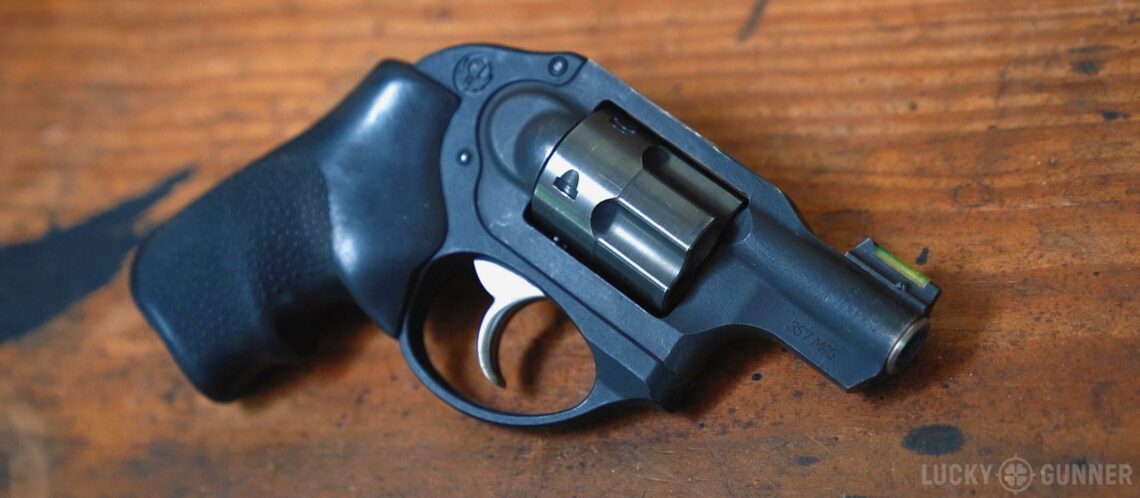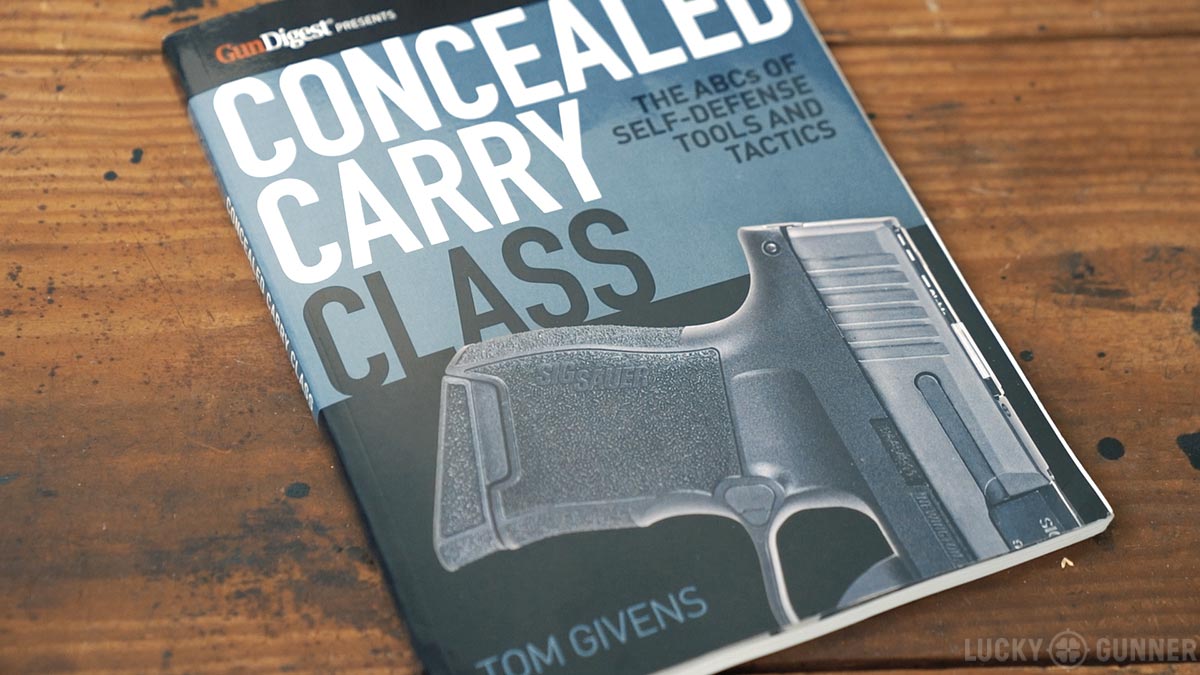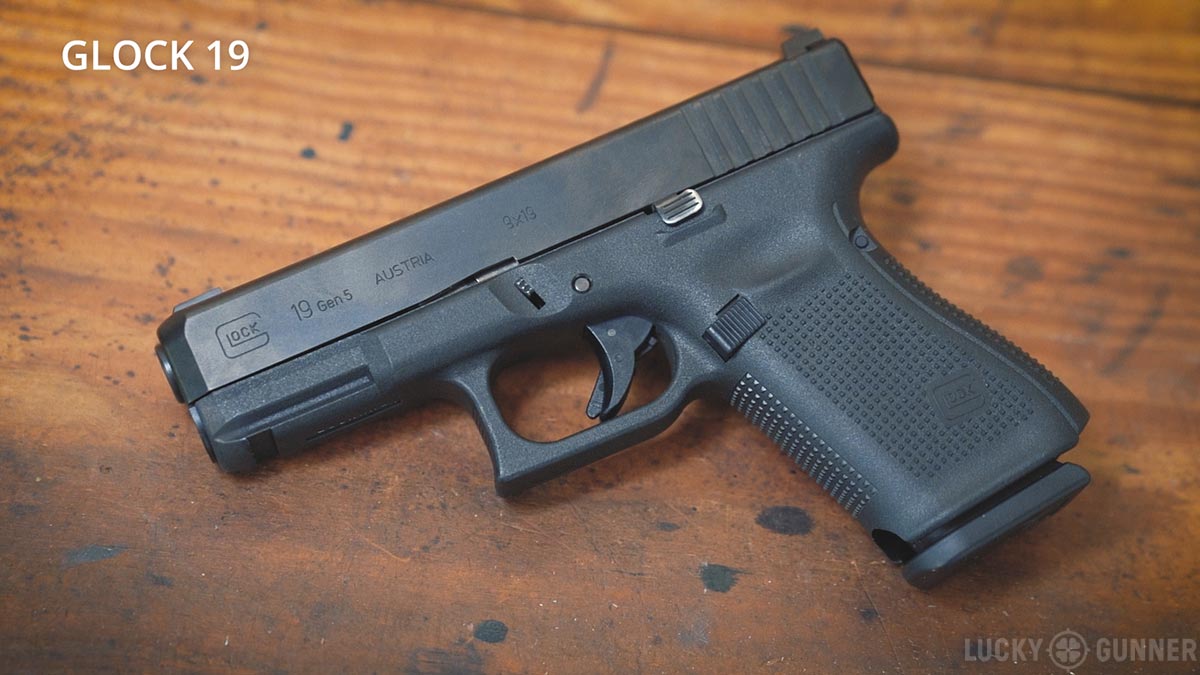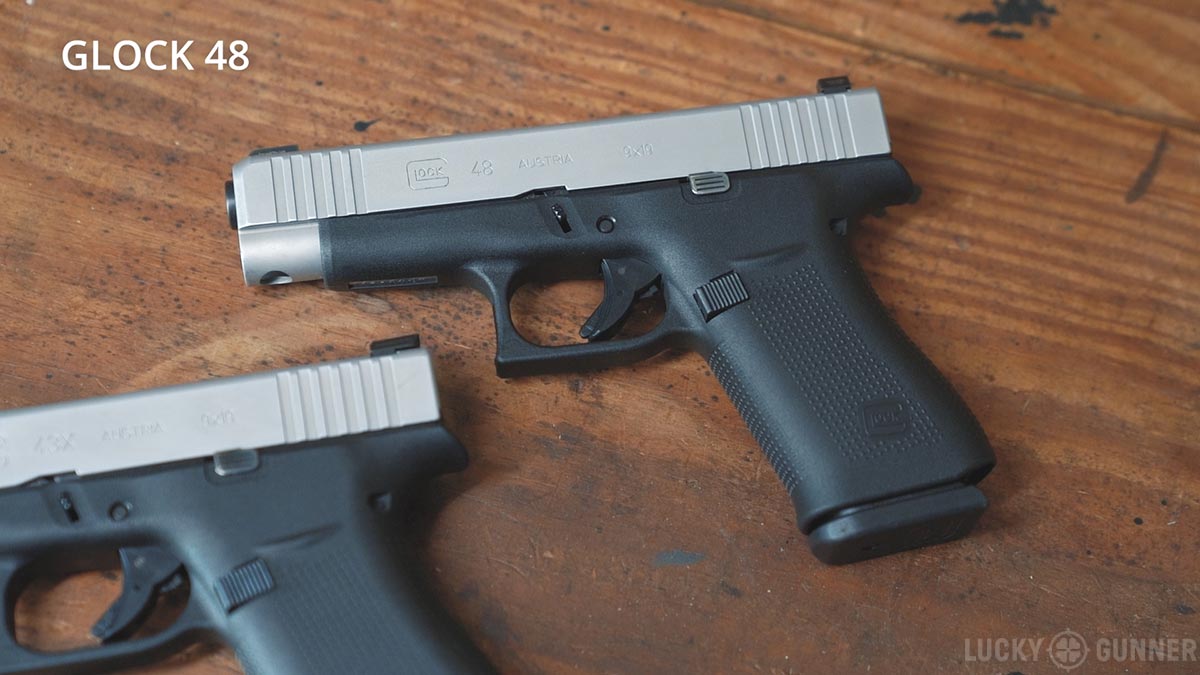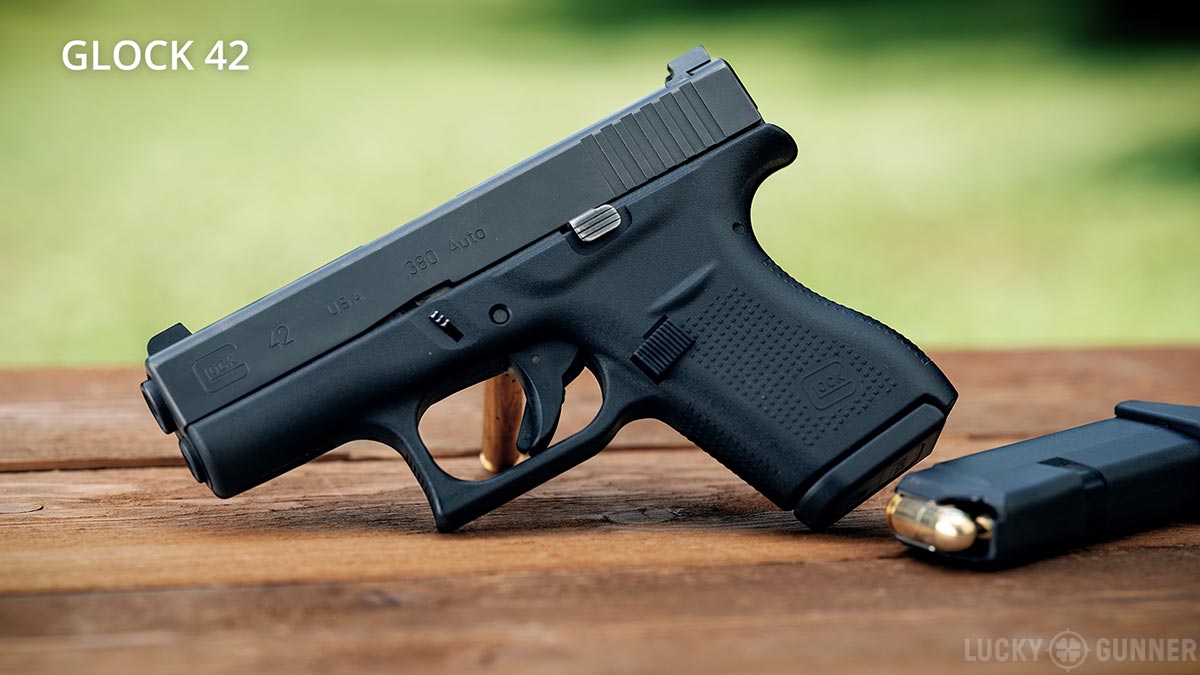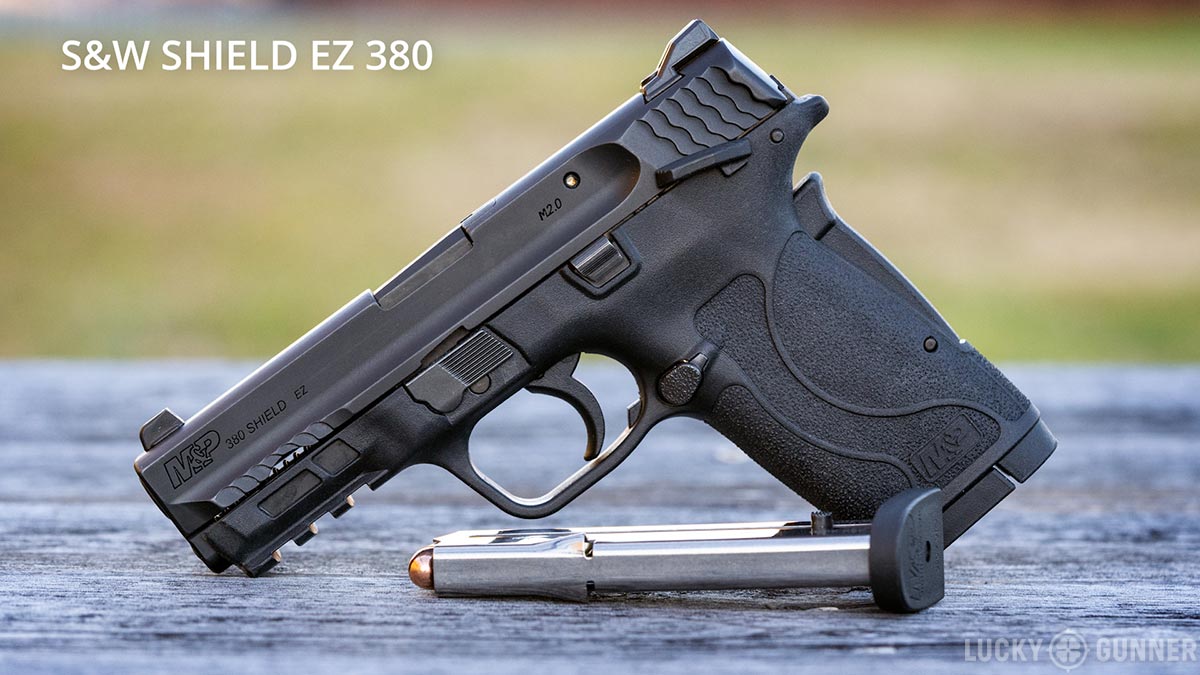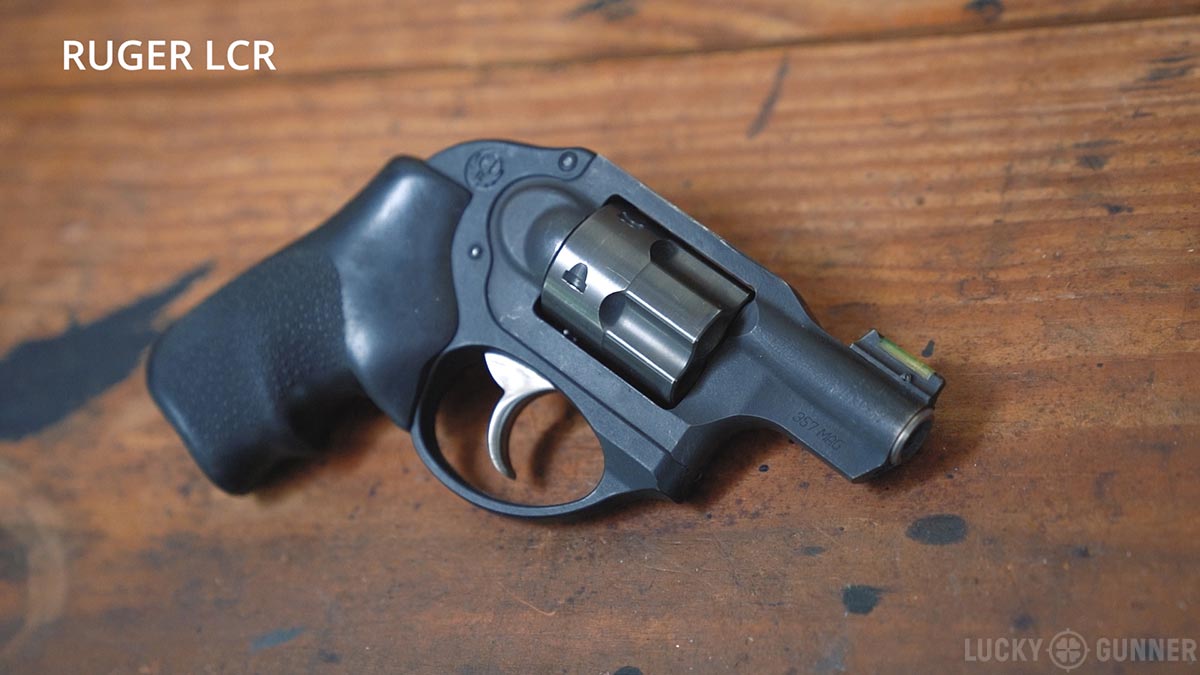“I”m new to shooting, what pistol should I get?” The honest answer is — I don’t know! Just because you’re a beginner doesn’t mean you will have much else in common with other new shooters. There are a lot of guns that could potentially work depending on your specific situation. But there are some handguns that tend to be a good starting off point for most people, so we’re starting with those. In this updated version of our handgun recommendations for new shooters, I’ve gone into more depth about the “why” behind each selection, so you can better decide whether it might be a good choice for you.
As always, you can find all the details in the video below, or keep on scrolling to read the full transcript.
Hey guys, I am Chris Baker from LuckyGunner.com. Today I’m going to be talking about the best handguns to consider if you’re a new shooter. This is an update of a video I did back in 2016. That one was called “Handgun Recommendations for New Shooters.” There have been a lot of changes in what’s available on the handgun market since then. And my thinking on this topic has also changed a little bit in the last few years.
This time around, I’m going to suggest fewer guns but I’m going to go into more depth about why I chose each gun. The truth is that there are probably hundreds of guns out there that would work just fine for most new shooters. By explaining more about the “why” behind the guns on my list, I think you’ll have a better idea of how to evaluate other guns that are not on my list. I don’t think you should go out and buy a gun just because some guy on the internet said to. I want you to have an understanding of what kinds of things make a gun well-suited for a new shooter so you can decide whether those things apply to you.
In a lot of ways, asking what gun is best for a new shooter would be like asking what kind of car is best for a new driver. Or maybe “what kind of shoes are best for playing sports” You would need a lot more information to even begin to answer either of those questions. Same thing with buying your first handgun. There’s no way I can give generic advice that’s going to work for everybody. I don’t know anything about your physical size or capabilities, your prior experience, your budget, or even why you want to own a handgun.
But I am going to make a couple of assumptions for the sake of this video. I am assuming that you want to buy a handgun primarily for the purpose of personal protection — either in your home or for concealed carry. I’m also assuming you’re an able-bodied adult without any major physical limitations. And I’m going to assume that you intend to practice with your handgun at least a few times a year and that you plan on getting some training in person from a qualified instructor. If your plan is to get a gun and just stick in your nightstand or your glove box and never think about it again, please don’t buy a gun. If you don’t know what you’re doing, that gun is far more likely to be a liability than an asset.
Pre-Gun Shopping Resources
Even before you get some in-person training, there are some other resources I want to recommend for you. Go buy a copy of the book Concealed Carry Class by Tom Givens. The old edition was called “Fighting Smarter.” This is a very comprehensive basic introduction to everything you need to know about self-defense before you even buy a handgun. I like it because it goes way beyond just shooting and gun stuff. He goes into topics like conflict avoidance, recognizing potential criminal threats, some legal issues you need to know about. There’s a little bit of everything.
If you’re brand new to shooting handguns or you’ve never shot one before at all, I’ve got a couple of videos you might want to watch from my Shooting 101 series. Check out How to Use a Semi-Automatic Pistol Part 1 and Part 2. And How to Use a Revolver. Those videos cover the basics of the different types of handguns and how to safely operate them.
Handgun Recommendations for New Shooters
Okay, you came here for specific handgun recommendations so now I’m going to give you some.
First I’ve got two guns I’m going to recommend for new enthusiast-level shooters. Then I’ve got a couple for the more casual gun owners and then in between there’s one that I think could work for either of those groups.
One thing you’ll notice is that all of these guns are chambered for 9mm or smaller calibers. As a beginner, there’s really no reason to consider any of the larger calibers like .40 S&W or .45 ACP. Those guns are more difficult to shoot and any ballistic advantage they might have is, at best, marginal. 9mm is going to give you the widest selection of models to choose from and the most affordable ammo.
Best Pistols for the New Enthusiast-Level Shooter
If you’re new to shooting handguns but you are ready to dive in head first — you’ve been bitten by the bug and you want to drop some serious time and money on this stuff — you want a gun for self-defense, but you also think this shooting thing is going to be your new hobby — I’m putting you in the enthusiast category.
Why So Many Glocks?
This is going to be pretty easy because the first three guns I’m suggesting are all Glocks. Now, if you don’t think you like Glocks for whatever reason, bear with me. I’m sympathetic to that opinion. I don’t particularly like Glocks, either. I don’t carry a Glock, nor do I shoot Glocks any more than I have to. But I wish that I had bought a Glock when I was first starting out. Whether you love them or hate them, Glocks are reliable and they’re ubiquitous. Those are two very valuable qualities to have in a gun if you’re a beginner.
Reliability is probably the most important thing we want in a life-saving tool. Fortunately, reliability is actually not all that uncommon in handguns these days. Most modern pistols are extremely reliable, especially the full-size and mid-size 9mm models. Just like any mass-produced machine, every company at least occasionally lets a gun out of the factory that doesn’t work that well. If you start looking around online for potential problems with a specific model, you will find them, regardless of the brand. Some companies have a better track record for reliability than others. Generally speaking, Glocks are among those that tend to work very well.
Almost every gun company makes a pistol these days that is very Glock-like. Smith and Wesson, Sig Sauer, Beretta, FN, HK, CZ — they all make polymer-framed striker-fired 9mm pistols that are pretty good. But Glocks are, by far, the most popular and have the most aftermarket support.
So, as a new shooting enthusiast, if you start off with a Glock, that means your gun uses magazines that are plentiful and cheap. As you’re trying to figure out what method of concealed carry works for you and what kind of holsters you like, any holster you might want to try will have a version that’s made for Glocks. Any type of sights you might want to experiment with are going to be made for Glocks. If something breaks or wears out, replacement parts are cheap and super easy to install. Life is just easier if you’re shooting a Glock.
As your skill level progresses as a shooter, you might discover things you wish you could change about the gun and you’ll probably be able to change them because there are so many aftermarket parts and modifications available for Glocks. But at first, you don’t need to change much. You should probably get a set of sights with a brightly colored, high-visibility front sight if your Glock didn’t come with that already. I’d also suggest the Striker Control Device — I’ve got a whole video on that for more details. Other than those two things, leave the gun alone until you’ve got at least 1000 rounds through it.
If you eventually decide you would be better off with a different gun altogether, you will have no problem selling the Glock. There is always a market for used Glocks. So even if you don’t end up sticking with Glocks long-term, it’s a good generic platform to start off with until you have the experience to understand what’s actually going to work best for you.
Glock 19
So, with that in mind, the first Glock I would recommend is the Glock 19. This is the Toyota Corolla of firearms. It’s a compact 9mm with a 15-round magazine. Really, it’s only compact compared to a full size gun. It’s actually fairly large by today’s standards because we’ve had so many small 9mms hit the market in the last several years. But that said, thousands of people carry Glock 19s concealed every day. If you don’t have any interest in carrying and you just want a gun for your house or the range, take a look at the full size Glock 17. It tends to be just a little easier to shoot, though not by much. The 17 is also good if you’ve got larger hands and you can’t quite get all your fingers on the grip of the 19.
But most people can learn to shoot a 19 just fine. The exception is people with small hands or short fingers. There’s not really any way to compensate for that without compromising your grip on the gun.
To figure out if the gun fits you, first make sure it’s unloaded. Then, place the topmost part of the grip in the web of your hand. Put your finger on the trigger and wrap your other fingers around the front of the grip. You should be able to touch the trigger with the middle of the pad of your finger without the rest of your finger touching the frame. There should be a gap there. While you’re doing that, the grip should still be where you put it in the web of your hand. If you have to shift your grip over so that the joint of your thumb is behind the grip, the gun is too big for your hands.
Glock 48
If the 19 is too wide, that’s going to rule out most other Glocks for you because they’re almost all the same width or wider. But fortunately, Glock has released a few slimmer models in recent years. If the 19 is too fat, check out the Glock 48 instead. I did a review on this one just a couple of weeks ago. It’s the same length and height as the 19, but slimmer. And it has 10 round magazines instead of 15. It also has the benefit of being a little easier to conceal than the 19.
The Glock 48 is a newer model. It’s only been out for about a year and a half. It doesn’t have the same frame width as the 17, 19, 26, and other Glocks that have been around for several decades. As a result, the 48 doesn’t have quite the same level of aftermarket support. You can still find plenty of holsters and sights and replacement parts for them, but they’re not quite as common.
A Carry Gun for Everyone: The Glock 42
The last Glock I’ll recommend is one that can work for either enthusiast-level shooters or casual shooters — the Glock 42. This is the smallest Glock. It’s also the only Glock you can currently get in the US that’s chambered for .380 ACP. It feeds from a six-round magazine. The .380 cartridge is slightly shorter and a bit less powerful than 9mm. If you’re looking for the smallest, most concealable pocket pistol on the market, there are a bunch of .380s that are smaller than the Glock 42. But they all suck to shoot, the Glock 42 does not. Those tiny .380s are very challenging for any shooter, let alone a new shooter.
Somebody will probably tell you that a .380 is not powerful enough for you to use to defend yourself. You might be tempted by the fact that there are several 9mm pistols out there that are almost as small as the Glock 42. They also suck to shoot, the Glock 42 does not. Basically, you don’t want to start off with a pistol that is very small relative to the caliber it fires. The 42 is just big enough that it has manageable recoil and small enough that most people can find a way to conceal it without buying a whole new wardrobe. Having a gun that you can shoot effectively that you will actually take with you is far more important than the size of the bullets it launches.
Now, if you think you’re more on the enthusiast side of things, you probably aren’t going to be satisfied with the Glock 42 as your only pistol. It’s just not quite as enjoyable at the range as a larger gun. And even if you do intend to carry something like the Glock 19, it takes most people a while and some trial and error to figure out how to comfortably carry a pistol that large on a daily basis. So in the meantime, the 42 gives you something you can carry with you all the time. Otherwise, you’ll end up leaving that bigger gun in the car because you’re sick of hauling it around.
Best Pistols for the New Casual Shooter
Okay, now for the casual shooters. If your plan is to buy a gun and you think you’ll get some training and practice every now and then, but you’re not necessarily looking for a new hobby — or maybe you prefer shooting just for fun most of the time — I’m putting you in the casual category.
So for you guys, the 9mm Glocks I mentioned — the 19 and the 48 — might work out just fine. But I’m going to suggest a couple of other guns that, along with the Glock 42, basically don’t require as much effort to learn how to use well.
Smith & Wesson Shield EZ 380
The first one is a little bit larger than the 42, but it’s even easier to shoot and that’s the Smith & Wesson Shield EZ 380. I did a full review of this gun last year if you want more details, but I’ll give you the basic rundown. This gun is slim and lightweight with an 8-round magazine. It’s very similar in size to the Glock 48. That makes it relatively large for a gun chambered in .380 ACP and that’s a good thing because it means the gun has extremely mild recoil.
Smith and Wesson designed this gun from the ground up with novice shooters in mind and I believe they did an excellent job with that. The slide is very easy to rack. The magazines are easy to load. The trigger is relatively light. It has a loaded chamber indicator. This little thing on the top of the slide will pop up when there is a round in the chamber.
The Shield EZ is available with or without a manual thumb safety like this one. I would suggest you get the version without the manual safety. If you’re not practicing with the gun frequently, there is a very good chance you’re going to forget to disengage the safety in an emergency situation. And that would be bad. But the option is there if you feel like you really have to have a manual safety.
There is also a Shield EZ in 9mm, as well as a smaller 9mm Shield without the EZ suffix. I recommend sticking with the EZ 380 version. The 9mm just has a lot more recoil. One of the most challenging aspects of shooting a handgun is learning effective recoil control. The .380 version of this gun makes that almost a non-issue. You can become proficient with this .380 and learn to get fast and accurate hits on target in just a fraction of the time it would take you to reach that level with a 9mm.
Ruger LCR .357 Magnum
The last gun I want to suggest is a revolver — the Ruger LCR.
Recommending a lightweight snub nose revolver for a novice shooter has kind of become a bad cliche. Guys behind the counter at gun stores are notorious for trying to nudge female shoppers toward snubby revolvers, especially when they have pink and purple ones in stock. The truth is that snub nose revolvers are very difficult to master. They are known for having very heavy triggers and a lot of recoil.
On the flip side, small revolvers tend to be a bit more reliable than the smallest of the semi-autos. Some people also find them a little easier to conceal because they don’t have as many sharp angles that tend to show through your clothing. For a novice shooter, revolvers have the advantage of being extremely easy to learn how to operate. Difficult to master but easy to use.
There are fewer controls to remember and the procedure for loading and unloading them is a lot more straightforward than it is with a semi-auto. You can always tell if it’s loaded just by looking at it because the rounds are going to be sticking out of the back of the cylinder. So if you are the type of person who is concerned that you might have trouble remembering how to safely operate a semi-auto, a revolver might be a good choice.
As far as the trigger, the LCR is a huge improvement over other lightweight small frame revolvers. Most versions of this gun have a very smooth trigger right out of the box. Now, it’s still pretty heavy with a long range of motion compared to the Shield or the Glocks. But you can get the hang of it pretty quickly with some dry practice at home.
The heavy recoil problem is something we can take care of with careful ammo selection. The Ruger LCR comes chambered in several different calibers. I would suggest looking into the .357 Magnum version. But do not, under any circumstances, buy .357 Magnum ammunition for it. Unless you just really love the sensation of getting smacked in the hand with a 2×4. Revolvers chambered for .357 Magnum can also fire the milder .38 Special cartridge. It seems like .38 would be bigger than .357, but it’s not. They’re the same diameter but the .38s are shorter. I know, it doesn’t make sense, just go with it. There is a version of the LCR that only fires .38 Special. But I suggest the .357 version because it’s a few ounces heavier and that’s going to help cut down on the recoil a little bit.
The .38 Special ammo you want is the bullet type known as a wadcutter. Several different ammo companies make these. Sometimes it’s also called a full wadcutter, a lead wadcutter, or a hollow base wadcutter. They have a distinctive appearance where the top of the bullet is flush with the top of the cartridge case. Of all of the different .38 Special loads out there, wadcutters tend to have the least recoil. That makes them very well suited for practicing. They also happen to be pretty effective for self-defense. Wadcutters were originally designed for punching clean round holes in paper targets. But it turns out they’re also really good at punching clean round holes in bad people.
The Ruger LCR will give you five rounds of .38 Special. That’s not a lot of ammo, but statistically speaking, it is enough to take care of the vast majority of violent criminal assaults.
Like I said earlier, there are tons of handguns out there that might work just fine for you as you’re starting out. These are just a few suggestions to help you get going in the right direction. Whether you end up buying a gun from this list, or some other handgun, when you need ammo, be sure to get it from us with lightning fast shipping at LuckyGunner.com
